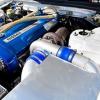Boost Question
Announcements
-
Similar Content
-
Latest Posts
-
Oh, I forgot too, all the multimedia stuff captured and sold through things like people playing Pokemon Go. Pokemon Go specifically, can actually be traced all the way back to a CIA investment company too. So yep, they're watching everything. Not to mention the new stuff where they've worked out how to use WiFi signals to be able to map occupants inside of a building. That one would be something that I see being more used in public/government buildings, as you need to understand the signals when the room has no one in it first. It's not as easy as Hollywood would like you to think it is.
-
By Dose Pipe Sutututu · Posted
Followed ☺️ Assuming those are NEO rods, then at least 400kW all day. -
Lets keep this going , Spotted this very stock V35 in Penrith and also saw a nice R32 FLY past me on Castlereagh rd , sounded really good.
-
Great work! Give it a clean up with some Emery paper, and I'd run a thread die over the threads too to clean them up. It will make reinstall much easier, and also life easier for the next time it needs to come out.
-
I'm not a fan of high humidity, it's one reason I don't mind being further inland out Ipswich, except the last 3 odd years, the drought broke, and it won't stop raining, which is making the humidity nearly unbearable when the rains are in during summer! For me, my body hates the cold, once the cold sets into my body, I'm totally screwed. I end up with severe muscle spasm in my back/shoulder muscles, and it feels like someone is trying to tear the muscles out. I have no issues with it getting stupid hot, so long as the humidity goes away. So the last 3 years as above, have been woeful! Ha ha. However, June 1st, and I'm only just converting from shorts and a tee, to long pants and a t shirt. And that's mainly as it's a bit wet and miserable and I wanted to work on a car.
-







Recommended Posts
Create an account or sign in to comment
You need to be a member in order to leave a comment
Create an account
Sign up for a new account in our community. It's easy!
Register a new accountSign in
Already have an account? Sign in here.
Sign In Now